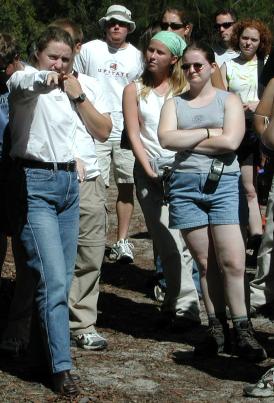
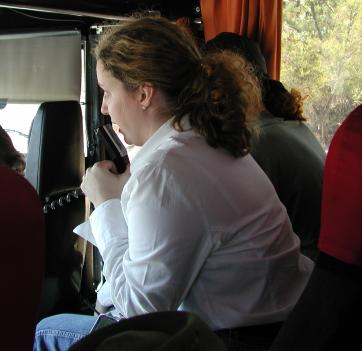
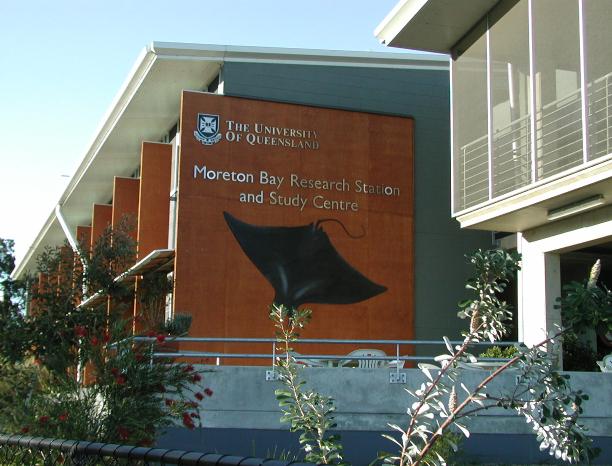 MBRS: Accommodations for the program on NSI were provided by the University of
Queensland's Moreton Bay Research Station.
MBRS: Accommodations for the program on NSI were provided by the University of
Queensland's Moreton Bay Research Station.


CRL: The morning was spent visiting the Consolidated Rutile Mining operation on North Stradbroke. Robin, our guide from CRL, explained the company's sand mining operation and the history of CRL's attempts to revegetate mined areas on the island.
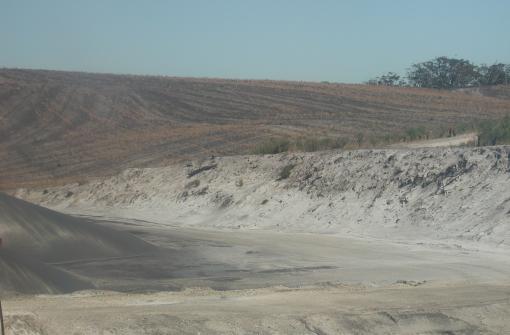 The next two photos show show
early stages in the revegetation process.
The next two photos show show
early stages in the revegetation process.
The dunes have been regraded, top soil replaced, and reseeded six months following mining.
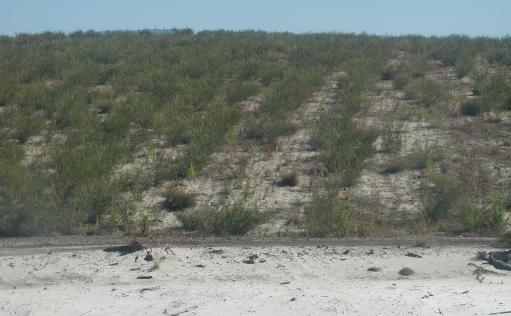 Eighteen to twenty-four months following mining local species beginning to take hold.
Eighteen to twenty-four months following mining local species beginning to take hold.
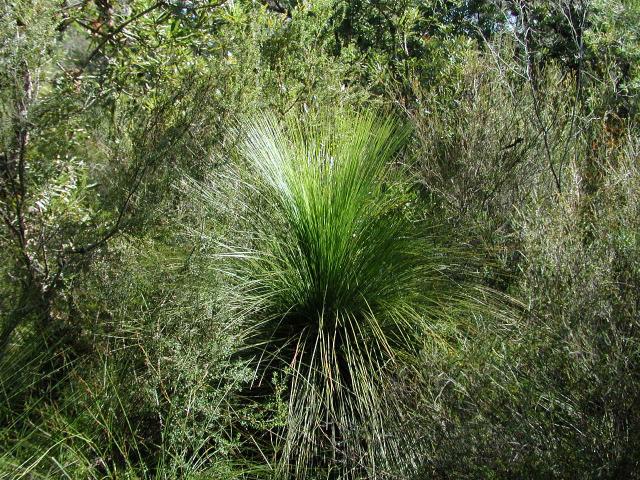 The afternoon was spent near Amity Point to visit a heathland vegetation site. Despite
the soils being nutrient poor, the species diversity is quite high.
The afternoon was spent near Amity Point to visit a heathland vegetation site. Despite
the soils being nutrient poor, the species diversity is quite high.
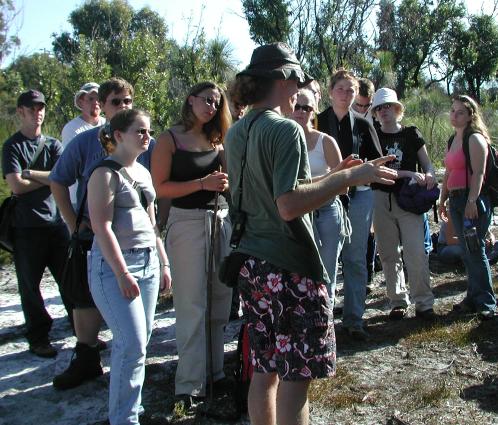 Mike Pole describes some of the heathland vegetation at Amity Point. Heathlands
are dense shrublands where the leaves are typically small and hard or "ericoid."
Mike Pole describes some of the heathland vegetation at Amity Point. Heathlands
are dense shrublands where the leaves are typically small and hard or "ericoid."
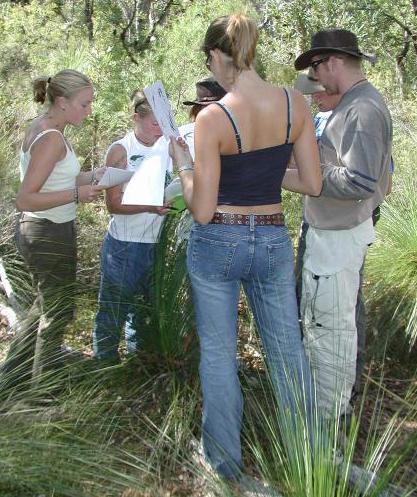 Plant identificaction and species-area data collection near Amity Point.
Plant identificaction and species-area data collection near Amity Point.
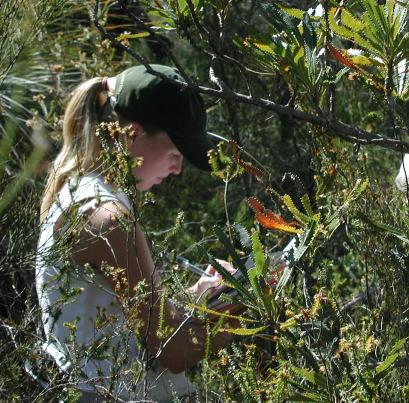 The understory is very dense in a heathland.
The understory is very dense in a heathland.
 Looking for ant lions at the Amity Point heathland. Typical of heaths, the
soil (here sand) is very poor.
Looking for ant lions at the Amity Point heathland. Typical of heaths, the
soil (here sand) is very poor.
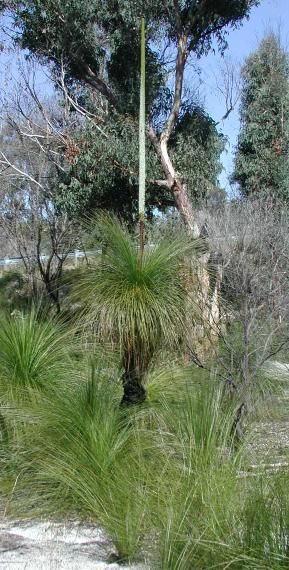

Some of the heathland plants at Amity Point included Xanthorrhoea "Grass Trees" (left)
and Banksia serrata (above).
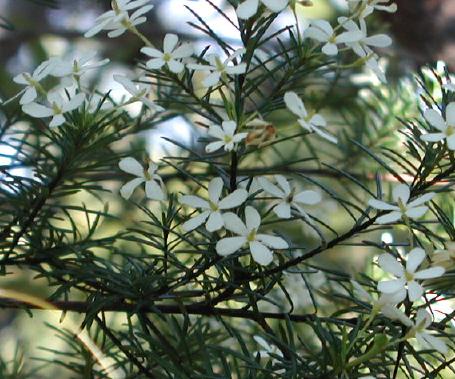 Leuopogon pimeliodes was in flower (there is usually some plant in
flower in a heathland at any time of year)
Leuopogon pimeliodes was in flower (there is usually some plant in
flower in a heathland at any time of year)
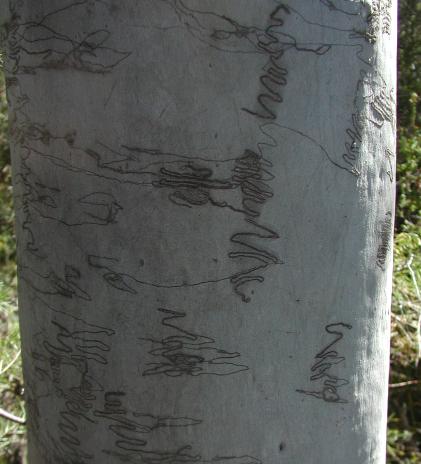 Eucalyptus signata or "Scribbly Gum":
The scribble markes seen in the bark of the scribbly gum are actually tunnels made by the larvae of the moth called Ogmograptis scribula. Increases in the tunnel
diameter show that the larvae are growing. The end of the track show where the larvae start to pupate.
Eucalyptus signata or "Scribbly Gum":
The scribble markes seen in the bark of the scribbly gum are actually tunnels made by the larvae of the moth called Ogmograptis scribula. Increases in the tunnel
diameter show that the larvae are growing. The end of the track show where the larvae start to pupate.
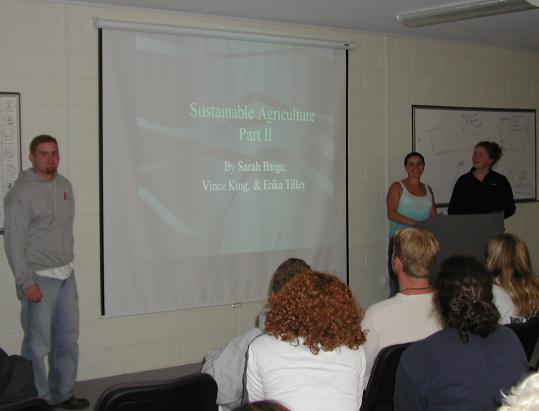 The long day concluded with Conservation Biology project reports back at MBRS.
The long day concluded with Conservation Biology project reports back at MBRS.